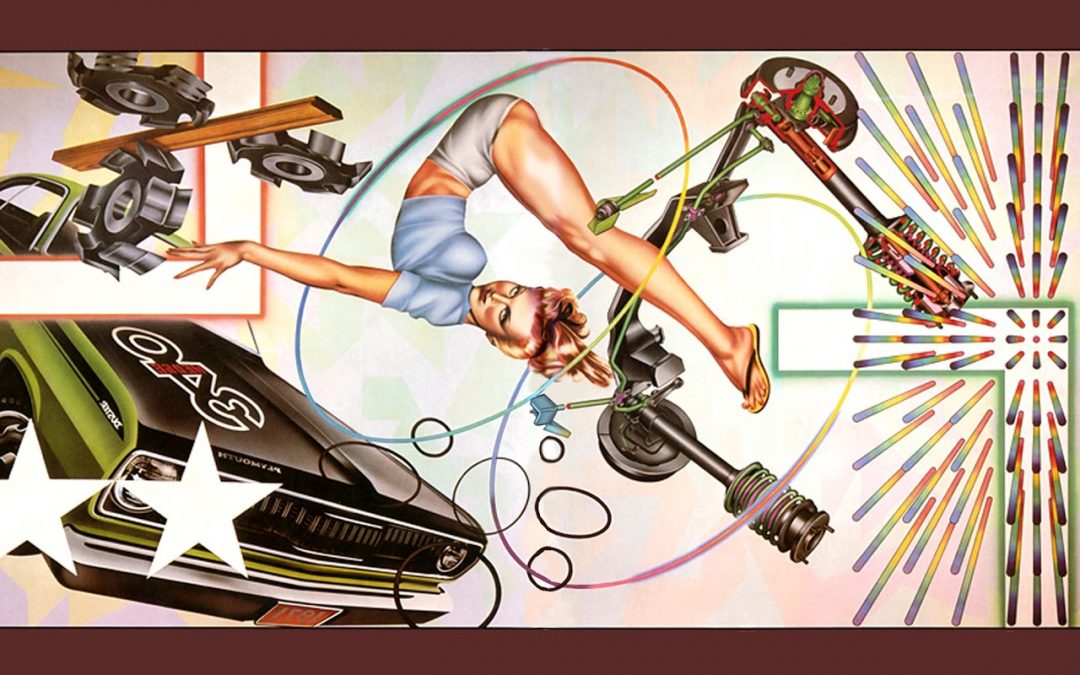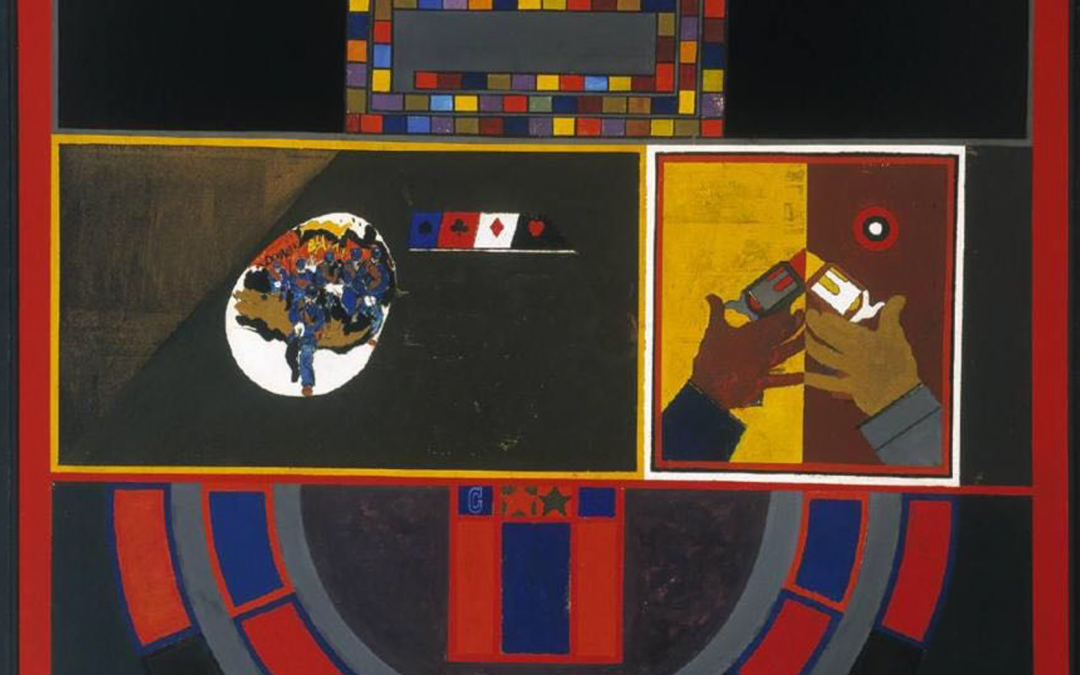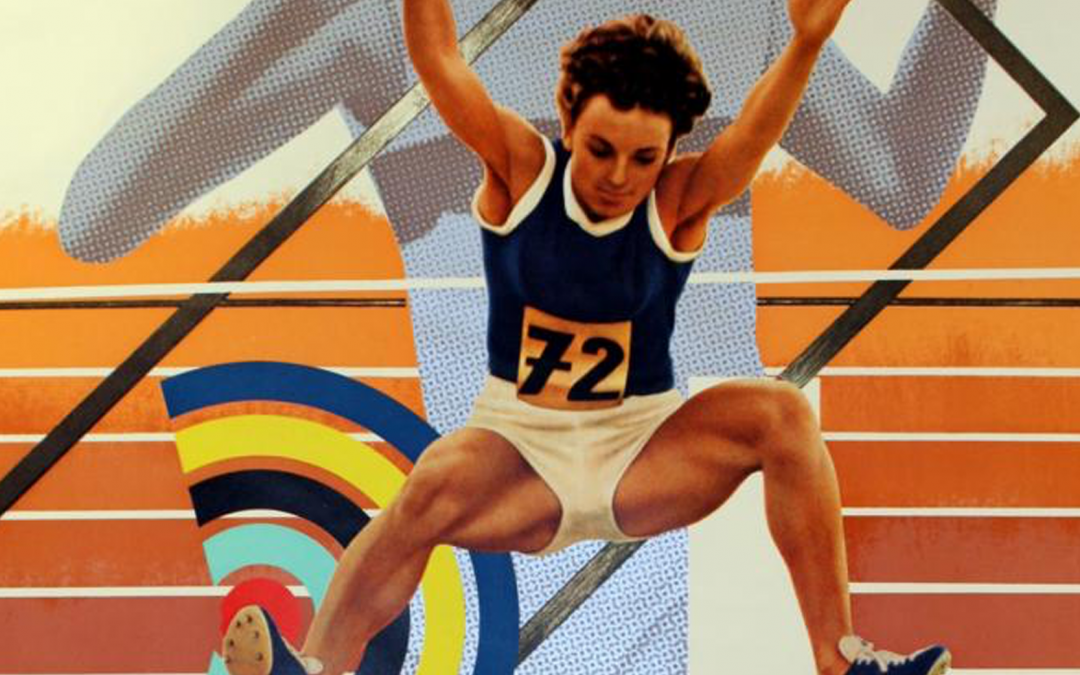No works found.
Please try a broader search.

Congratulations to The Cars for the induction into the Rock and Roll Hall of Fame!

On a rainy fall day in 1984, Peter Phillips met drummer David Robinson of The Cars over cocktails in a London bar. Robinson is credited for naming the band and concepting its album covers, which have also featured risqué artwork from pin-up artist Alberto Vargas (Candy-O, 1979). Robinson used Phillip’s painting Art-O-Matic Loop Di Loop for the cover of the band’s fifth album, Heartbeat City.
Art-O-Matic Loop Di Loop is one of Phillips’ most recognized works; it showcases a 1971 Plymouth Duster and sexy pin-up interspersed with colorful geometric shapes. The style is characteristic of Phillips’ early-70s work, including Seleco-Mat Techototempest, Selecto-Mat Rear Axle and Art-O-Matic Cuda Cutie.
Cars and girls iconized the liberated youth culture of the 70s and 80s – sexy, fast and free. The marriage of Pop Art and Pop Music with the Heartbeat City album demonstrates the permeation of progressive sexual attitudes into mainstream music and aesthetics.

Please try a broader search.

A century after the American Civil War, Peter Phillips created War/Game using oil and polished wood on canvas. The painting depicts opposing confederate and union forces through typical emblems of combat – flags, guns and uniforms. Four decades later, the moody piece struck a chord with New York rock band The Strokes, who licensed the piece for their 2003 LP, Room on Fire.
The Strokes pioneered the American garage rock revival, drawing inspiration from 1960s British punk like The Rolling Stones and The Kinks. Room on Fire was a platinum follow-up to The Strokes’ 2001 EP, The Modern Age, which was released shortly after the infamous September 11 World Trade Center attacks.
The album speaks to battles in love, psyche and politics, with lyrics like “Don’t sing along with me. I said I was fine, it’s just the second time we lost the war…” (Between Love & Hate). Akin to The Strokes’ gritty punk melodies, Phillips’ painting offers a dark expression of contrarian forces. Peace and war, love and hate, truth and lies – the diametric expressions that characterize humanity.
Perhaps because these themes are so universal to the human plight, Phillips’ War/Game has transcended the boundaries of time. From The Freedom War to the War on Terror, the Beat generation to Millennials, and a British pop artist to an American rock band, Phillips’ War/Game is a durable fabric of our culture, interweaving some of the most pivotal events of our time.
Please try a broader search.

Peter Phillips was commissioned to create one of twenty-eight posters to advertise the Munich Olympic Games of 1972. Pop art contemporaries such as Allen Jones and David Hockney contributed to the collection and attended the opening ceremonies with Phillips. These posters were the first of their kind, immortalizing many cultural icons through the convergence of sport and art, and setting a precedent for artistic contributions in Games to come.
Phillips’ print incorporates literal references of the time and place, including a hurdler with the number 72, and colors of the German flag and Olympic logo. As with the entire collection of art supporting the officially named “Happy Games,” the Hurdler expressed hope and pride in a new and modern Germany. Tragically, the air of optimism turned disastrous after Palestinian zealots murdered 12 hostages in what is now known as the “Munich Massacre”.
When asked what his paintings signify, Phillips responds, “different things to different people of course.” This couldn’t hold truer for Hurdler, which has assumed the responsibility for a spectrum of emotions connected to competition, victory, loss, nationalism and religious fervor. The Hurdler is one of many of Phillips’ works that memorializes a specific time, culture and place while taking on new meaning for observers based on evolving context.
Please try a broader search.